- europages
- >
- COMPANIES - SUPPLIERS - SERVICE PROVIDERS
- >
- linear potentiometers
Results for
Linear potentiometers - Import export
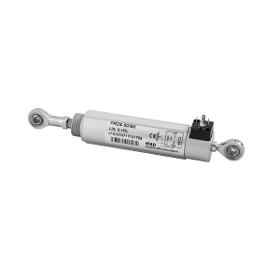
ELAP AUTOMAZIONE INDUSTRIALE
Italy
The linear motion potentiometers series PR2S have a 26 mm diameter round section housing, 5 mm diameter shaft and two ball joints at the ends. Their measuring strokes range from 25 to 150 mm, and their standard resistive value is 5 KOhm. The conductive plastic resistive element grants the transducer a long life (100,000,000 motions), high independent linearity and virtually infinite resolution. The IP65 protection degree against environmental agents allow to employ the potentiometers series PR2S for severe applications, even outdoors, at extreme temperatures. AVAILABLE STROKES mm 25 – 50 – 75 – 100 – 150 AVAILABLE RESISTIVE VALUES 5 KOhm (standard) – Optional: 1 KOhm for PR2S 25
Request for a quote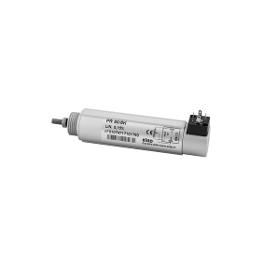
ELAP AUTOMAZIONE INDUSTRIALE
Italy
The linear motion potentiometers series PR have a 26 mm diameter round section housing and 5 mm diameter shaft. Their measuring strokes range from 25 to 150 mm, and their standard resistive value is 5 KOhm. The conductive plastic resistive element grants the transducer a long life (100,000,000 motions), high independent linearity and virtually infinite resolution. The IP65 protection degree against environmental agents allow to employ the potentiometers series PR for severe applications, even outdoors, at extreme temperatures. The potentiometer PR mounting method is extremely easy: it can be fixed by means of metal clamping brackets, or by the front screw thread. Several fittings are available: ball joint, self-aligning joint, feeler pin.
Request for a quote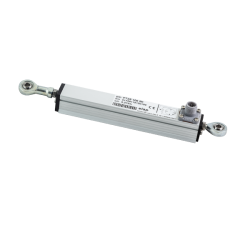
ELAP AUTOMAZIONE INDUSTRIALE
Italy
Thanks to their small size – 21 mm square section case – the linear potentiometers seris PT2S can be profitably employed for those applications where limited dimensions are a critical factor. Two ball joints are provided at both ends for air fixing. The series strokes range from 25 to 150 mm. The electrical connection is granted by means of M12 connector. The stout extrused aluminium case grants a high protection degree against environmental agents.
Request for a quote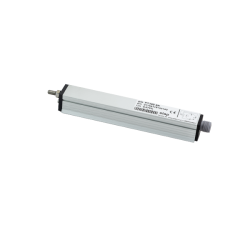
ELAP AUTOMAZIONE INDUSTRIALE
Italy
Thanks to their small size – 21 mm square section case – the linear potentiometers seris PT can be profitably employed for those applications where limited dimensions are a critical factor. The series strokes range from 25 to 150 mm. The electrical connection is granted by means of M12 connector. The stout extrused aluminium housing grants a high protection degree against environmental agents.
Request for a quote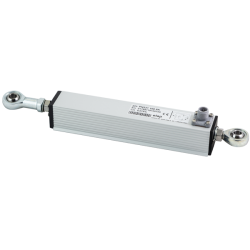
ELAP AUTOMAZIONE INDUSTRIALE
Italy
The linear motion potentiometers series PN231 have a 31 mm square section housing, 8 mm diameter shaft and two fixing ball joints at the ends. Their measuring strokes range from 50 to 750 mm, and their standard resistive value is 5 KOhm. The conductive plastic resistive element grants the transducer a long life (100,000,000 motions), high independent linearity and virtually infinite resolution. The electrical connections are granted by means of M12 connector. Thanks to their high protection degree against environmental agents the potentiometers series PN231 are suited for severe applications, even outdoors, at extreme temperatures.
Request for a quote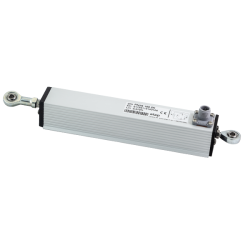
ELAP AUTOMAZIONE INDUSTRIALE
Italy
The linear motion potentiometers series PN2S have a 31 mm square section housing, 6 mm diameter shaft and two fixing ball joints at the ends. Their measuring strokes range from 50 to 750 mm, and their standard resistive value is 5 KOhm. The conductive plastic resistive element grants the transducer a long life (100,000,000 motions), high independent linearity and virtually infinite resolution. The electrical connection is granted by M12 connector. Thanks to their high protection degree against environmental agents the potentiometers series PN2S are suited for severe applications, even outdoors, at extreme temperatures.
Request for a quote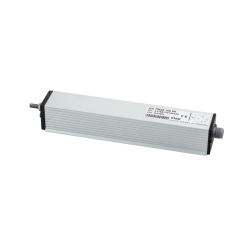
ELAP AUTOMAZIONE INDUSTRIALE
Italy
The linear motion potentiometers series PNS have a 31 mm square section housing and 6 mm diameter shaft. Their measuring strokes range from 50 to 950 mm, and their standard resistive value is 5 KOhm. The conductive plastic resistive element grants the transducer a long life (100,000,000 motions), high independent linearity and virtually infinite resolution. The connections are granted by means of M12 connector. Thanks to their high protection degree against environmental agents the potentiometers series PNS are suited for severe applications, even outdoors, at extreme temperatures.
Request for a quote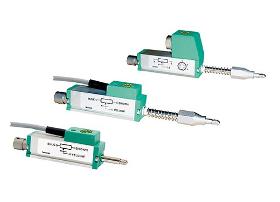
BURSTER PRÄZISIONSMESSTECHNIK GMBH & CO KG
Germany
These displacement sensors are potentiometric displacement sensors used for direct measurement, testing and monitoring of mechanical displacements. The spring-loaded control rod eliminates the need of coupling with the measurement object. A prerequisite for a very long life duration of the devices is a parallel alignment of the motion direction of the measurement object and the rod. Areas of application are: Displacement on: —Electromagnets —Hydraulic cylinders —Switches and buttons Measurements of: —Deformation —Bending —Press-fits —Feed strokes Due to the technology employed in potentiometric displacement sensors, they always operate with a sliding contact system. FEATURES: —Measurement ranges: 0 ... 10 mm to 0 ... 150 mm —Non-linearity up to 0.05 % F.S. —Resolution 0.01 mm —Follower roll on request —Optional with internal spring
Request for a quote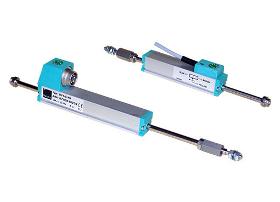
BURSTER PRÄZISIONSMESSTECHNIK GMBH & CO KG
Germany
Displacement sensors models 8710 and 8711 with resistance tracks made of conductive plastic material are designed for a direct and accurate measuring of mechanical displacements. A special ball joint coupling is mountable on both ends of the driving rod. Because of this the sensor may be used free of clearance or lateral forces also with angular or parallel misalignment between sensor and measuring device. A special multi-fingered slider provides a good electrical contact also at high adjustment speeds or vibrations. Areas of application are: —Electromagnets —Switch and button deflections —Pneumatic cylinders —Press-fits (longitudinal press-fits) —Hydraulic cylinders —Measurements of deformation and bending —Length tolerances —Feeding paths Due to the technology employed in potentiometric displacement sensors, they always operate with a sliding contact system.
Request for a quote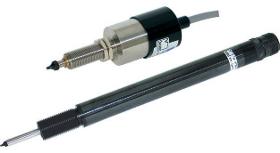
BURSTER PRÄZISIONSMESSTECHNIK GMBH & CO KG
Germany
Linear displacements and mechanical values which can be converted to displacements (e.g. compressive and tensile force, strain, torque and vibration) may be measured by these DC/DC displacement sensors. The probe tip of these sensors is pushed onto the measuring object by a spring. This makes it possible to use these sensors were a mechanical modification of the measurement object (mounting hole) is not allowed or difficult. Output voltage as function of the displacement with the impedance as parameter. Sensors of series 87350 generally consist of an oscillator, a demodulator and a transformer with moveable core. They are energized by DC voltage. The oscillator uses this DC voltage to generate the carrier frequency, which is needed for the operation of the sensor. Dependent on the position of the core, which is made of ferromagnetic material, voltages are induced by the two secondary coils of the transformer.
Request for a quote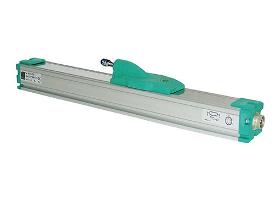
BURSTER PRÄZISIONSMESSTECHNIK GMBH & CO KG
Germany
The high resolution allows linear measurements to be accurately sized even in large measurement ranges. Conversion of rotatory and translational motion by spindles, wires or others is not necessary for direct displacement measurement. Areas of application are: —Hydraulic and pneumatic cylinders —Detection of positions on coordinate —Inspection machines —Displacement of plungers, knee levers or extruders —Coil and de coil lengths —Strokes on chassis —Metering strokes Displacement sensors model 8718, using a resistance track made of conductive plastic material, are suitable for direct, accurate and absolute measurements of displacements and lengths. Special processes are applied to give the resistance tracks low friction, low tendency to stick/slip, resistance to abrasion and long-term stability. The vibration-cushioned slider allows a clear signal output even by slight shocks or high operating speeds up to 10 m/s.
Request for a quote
NOVOTECHNIK MESSWERTAUFNEHMER OHG
Germany
With the ever increasing automation of assembly lines, users are finding that values for absolute linearity are steadily gaining importance. Unlike independent linearity, for absolute linearity the reference slope is fully defined (Fig. 8) so that there is no need for subsequent system trimming. The definition of an index point establishes a relationship between the mechanical input value (travel or angle) and the output voltage. Potentiometers whose linearity is defined by these criteria can be installed without a need for subsequent adjustment. As with independent linearity, it is best to determine the absolute linearity of a potentiometer by comparing its output with that of a master potentiometer. With absolute linearity, it is frequently necessary for the tolerance fields to be stepped. Fig. 9 shows a practical example. Fig. 8 Fig. 9
Request for a quote
NOVOTECHNIK MESSWERTAUFNEHMER OHG
Germany
Rapid developments in the fields of control engineering and in microprocessor and semiconductor technology have resulted in the widespread use of electronically controlled systems in every branch of industry today. This has created a need for sensors that are inexpensive but, at the same time, sufficiently robust, both electrically and mechanically, to withstand a wide range of temperatures (e.g. from -40 to +160 degrees centigrade), particularly in applications involving large quantities, such as the automobile industry. Fig. 1 provides a summary of the various types of sensors for angular and linear motion that are in use today. This paper is concerned with quality criteria (1) and (2) applicable to conductive-plastic potentiometers for use as sensors for angular and linear motion. Such potentiometers essentially comprise the following components: 1. The resistance element (support material + a resistance track of conductive plastic) 2. A wiper (precious metal alloy) 3. A...
Request for a quote
NOVOTECHNIK MESSWERTAUFNEHMER OHG
Germany
Smoothness is a measure of the deviations from perfect regularity that appear in the output voltage of a potentiometer. This irregularity is measured over a specified travel increment, for example 1 %, and is expressed as a percentage of the applied voltage. For the measurement of smoothness, the VRCI definition calls for a bandpass filter to be used as a means of suppressing any linearity error and for the potentiometer to be operated with a load resistance (e.g. 100 . Rp). This method has certain disadvantages: a) The use of a filter causes both the absolute wiper velocity and any changes in such velocity to affect the smoothness values. Since the filter partly integrates and partly differntiates, the chart-recorded smoothness curve does not accurately indicate the variations in the output signal. b) The load applied to the potentiometer also contributes to error by causing variation in the contact resistance which is greatest with the wiper at the voltage application end and...
Request for a quote
NOVOTECHNIK MESSWERTAUFNEHMER OHG
Germany
If a voltage U0 is applied to a potentiometer with a linear characteristic as in Fig. 5 and the wiper is moved in direction Alpha (standardized movement, angle 0;1 ) then the relationship illustrated in Fig. 6 will exist between the output voltage and the mechanically input value. The maximum deviation of the potentiometer curve from an ideal straight line is referred to as the independent linearity error. The slope and axis intercept of this straight line can be so chosen that the error f within the travel L1 is minimized. The error ±f is indicated as a deviation in percentage terms of the output voltage from the theoretical in relation to the input voltage. Since direct measurement of the potentiometer characteristic does not make it possible to assess the extent of such an error, only the difference between the potentiometer characteristic and that of an essentially perfect master potentiometer is plotted as in the practical example given in Fig. 7. Typical values for...
Request for a quote
NOVOTECHNIK MESSWERTAUFNEHMER OHG
Germany
Of all the quality features mentioned, linearity and conformity are the values most often defined in the existing literature (2). These terms express the extent to which the voltage output from a potentionmeter, and also other types of angular of linear movement sensor, differs from a prescribed theoretical function. In by far the majority of cases, the desired output function is directly proportional to the angel or linear movement that is input. Formula: Fig. 5. Whereby m characterizes the gradient, the offset voltage of the potentiometer and the linear or angular travel. Where there is a linear relationship, deviation is referred to as linearity. Where the relationship is nonlinear. U = f (x) + a + b the deviation is referred to as conformity. Fig. 5
Request for a quote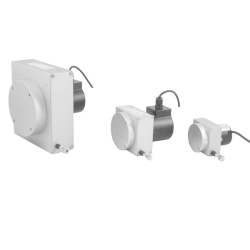
ELAP AUTOMAZIONE INDUSTRIALE
Italy
Stout, easy to install, highly protected against environmental agents: ELAP linear wire potentiometers series HPS are the ideal solution for those industrial applications which require high accuracy and measuring length up to 8 metres. The series HPS, with potentiometer output, is supplied with strokes ranging from 250 to 8000 mm, ±0.25% linearity, 5 KOhm resistance and infinite resolution. The analogue output signals 4-20 mA or 0/10V are also optionally available. The types HPS-S, HPS-M and HPS-L differ for mechanical size and measuring stroke. Series HPS-S: 250, 500, 1000 mm Series HPS-M: 500, 750, 1000, 1250, 1500, 2000, 3000, 4000 mm Series HPS-L: 3000, 4000, 5000, 6000, 8000 mm
Request for a quoteDo you sell or make similar products?
Sign up to europages and have your products listed
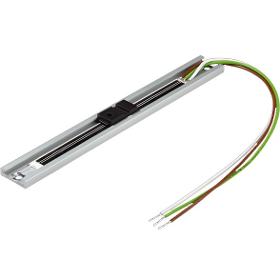
MEGATRON ELEKTRONIK GMBH & CO. KG
Germany
The potentiometric displacement sensor series MBX is excellently suited for very limited installation space due to its extremely flat design with an overall height of only 7 mm. In addition, the universal cursor can be coupled mechanically in a flexible manner, so that no push rod is required, thus saving space in the customer's housing. With its open design, the displacement encoder is designed for installation in a customer housing.
Request for a quote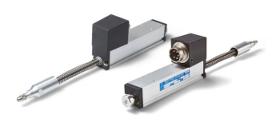
MEGATRON ELEKTRONIK GMBH & CO. KG
Germany
The displacement sensors of series SPR18 are used in industrial applications, which require a compact linear transducer with spring-suspended probe tip, long lifespan, high accuracy, rear and front guided push rod with measuring length from 25 to 100 mm. The compact and robust linear potentiometers of the series SPR18 are designed for industrial applications. The housing profile made of anodized aluminium corresponds to the usual industrial dimension with 18x18 mm. The transducer has a stainless steel ball in the probe tip, for example for scanning profiles or for monitoring distances. In the displacement sensor series SPR18, the mechanical detection of linear movement is done by a rear and front guided push rod.
Request for a quote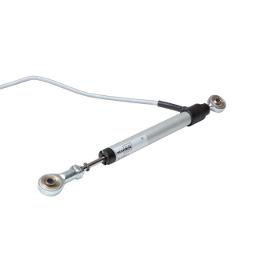
MEGATRON ELEKTRONIK GMBH & CO. KG
Germany
The compact displacement sensors of series RC13 are used in applications with harsh environmental conditions, which require a robust linear transducer with long lifetime, high accuracy and a guided push rod with measuring lengths from 25 to 250 mm. The compact linear potentiometers of the series RC13 are designed for applications with harsh environmental conditions. For mechanical coupling, the displacement sensors are available in three mounting versions: mounting brackets, ball joints or flange. The variant with ball joints compensates movements transversely to the push rod, so that non-linear movements can also be coupled simply and without stress. The mechanical detection of linear movement is done by a front guided push rod.
Request for a quote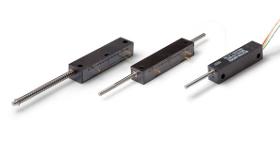
MEGATRON ELEKTRONIK GMBH & CO. KG
Germany
The series MM10 without spring return / MMR10 with spring return is used in applications with very confined space, which require a miniaturized displacement sensor with long lifespan, high accuracy and guided push rod on both sides. The linear potentiometers of the series MM10 / MMR10 are especially space-saving designed and therefore very suitable for applications with very confined space. The potentiometric distance measurement is carried out with a high-resolution conductive plastic resistive element. Thanks to this Comolded conductive plastic technology and the high-quality sleeve bearings, the compact displacement encoder has a very long lifetime and high accuracy due to its good linearity. In the displacement sensor series MM(R)10 the mechanical detection of linear movement is done by a rear and front guided push rod. The displacement sensor can be used both as a probe and with a guided push rod. The internal or external spring return opens up additional applications.
Request for a quoteResults for
Linear potentiometers - Import exportNumber of results
22 ProductsCountries
Company type